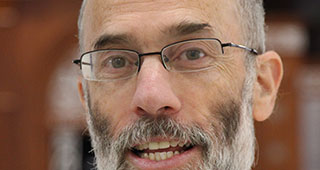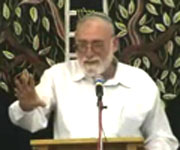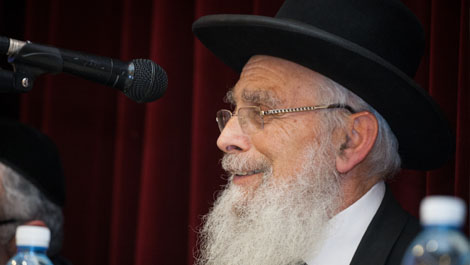Beit Midrash
- Sections
- Chemdat Yamim
- Parashat Hashavua
- Torah Portion and Tanach
- Shmot
- Ki Tisa
First let us understand what it means that Moshe’s face was karan. Both the earlier and the later commentators explain that Moshe received some sort of special shine or glow emanating from his face. This is related to the event of receiving the Torah and luchot a second time, and is in line with the pasuk, "The wisdom of a man will light up his face" (Kohelet 8:1). The Rashbam and the Ibn Ezra scoffed at the Karaite who explained that Moshe’s face was dry because he did not eat for 40 days or the person who said that karan is related to the keren (horn) of an animal.
Let us now move on to the form of the luchot. So many shuls display the likeness of these holy tablets, usually above the aron kodesh. In the great majority of the cases, the likeness has rounded tops. This is mistaken. The gemara in Bava Batra (14a) discusses what was in the aron in the Temple in addition to the luchot. In that discussion, the gemara mentions the undisputed measurements of the luchot. The dimensions were six (i.e., an amma (cubit) of six tefachim (handbreadths)) by six by three. Putting one tablet on top of the other, they would form a perfect cube of one cubic amma. It is interesting to note that the Holy of Holies, both in the Mishkan (Tabernacle) and in the Beit Hamikdash (Holy Temple) was also a perfect cube, in that case, of ten ammot in each direction. In any case, every indication was that the luchot were square, not rounded.
Another point worth clarifying is the place of the Ten Commandments on the luchot. It is universally depicted as each tablet containing five of the commandments. This indeed is the opinion of Rabbi Yehuda (Shemot Rabba, Ki Tisa 47). However, Rabbi Nechemia (ibid.) disagrees and says that there were ten on each tablet (i.e., the tablets were a repeat of each other). Perhaps the curious possibility of their being a repeat caused most people to just assume that Rabbi Yehuda is correct.

Parashat Hashavua: Can One Give a Loan to Hashem? – part I
Rabbi Yossef Carmel | Elul 5785

How and What to Kasher; Why to Kasher
Various Rabbis | 19 nissan 5769

Parashat Hashavua: The Symbolism of Mashiv Haruach U’morid Hageshem
Rabbi Yossef Carmel | Tishrei 5786
























